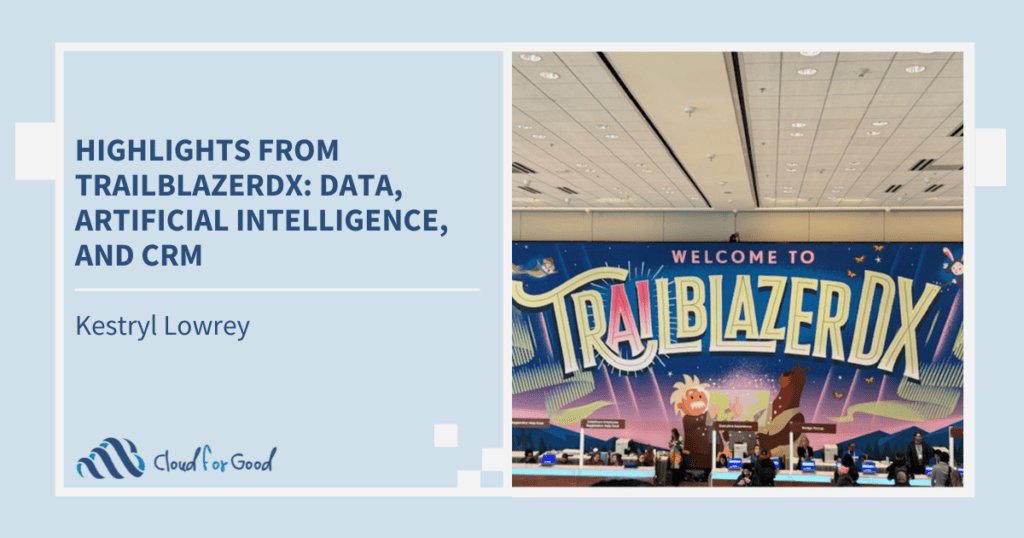by Kathleen Lueckeman
Breaking down organizational silos sounds easy. Any Internet search will yield articles with advice, most of which boils down to improving your communication: Share information widely; allow outsiders to understand your value to the organization; develop confidence that comes when trust is established, etc. But these resources are light on the practical “how to” steps. Enter Salesforce and its internal social network, Chatter.
A standard Salesforce tool, Chatter allows organizations to improve communication and share information across departmental boundaries. Users can post comments to a “feed,” upload and versioned files so everyone has access to common documentation and “follow” people, groups, files and topics to stay on top of what’s happening across the organization.
Plus, using it feels familiar. I once heard someone say “If Facebook and Twitter had a child, that child would be Chatter.” People are comfortable with posting, uploading, following, and sharing because social networks are so pervasive. Chatter leverages that familiarity to foster collaboration – and collaboration is how you’ll break down your silos.
At my organization, we created Chatter Groups right away and these groups represented departments. While this structure initially looked alarmingly like the invisible walls of our organizational silos, we use these groups to post critical information our departments want – and need – to share with others.
Our posts include updates on our daily work, new versions of shared files, praise for other users and more. We even post dashboard components to Chatter, to keep people updated on key metrics that the university is tracking.
Here are five ways you can use Chatter to break down silos in your organization.
1. Interact with other Salesforce Users
Active users have the best Chatter feed and you can tap into it by following them (just click the green “plus” icon next to their name). Post on their wall: Ask a question, share an insight or provide advice. Those interactions will be noticed by others – someone may have the same question, for instance, but didn’t think to post it – and will begin the process of sharing institutional knowledge. Plus, others will start to look to you as a thought leader or a facilitator or a subject matter expert and that helps you move past silo barriers.
2. Populate your feed by posting – and posting often
When you post, you can share what you are doing, your priorities and your timeline. This helps others understand not only what is happening with a process, but documents the specifics of your work and shows how you provide value to the organization. Keep people current on your work by posting daily and you will soon find others interacting with your feed and collaborating with your work.
3. Create a Chatter Group and encourage others to follow it
Starting your own group takes just a few clicks, but that’s only a start. You’ll want to encourage users to follow your group, so be sure to post instructions. The group feed is also a great way to share announcements and now that you can “@ mention” a group, one post can be shared widely with many groups. Groups are a practical tool to flattening silos, allowing targeted discussions and cross-office collaboration.
4. Share files so they’re not hidden on a desktop or in a shared drive
Too often, we have multiple copies of the same file – some on our desktop (shhhh, don’t tell IT) and some in shared drives – and it can be confusing to keep track of which file is the most recent version. Lost files, buried documents and out-of-date forms are a thing of the past with Chatter. In one easy upload, users can follow a file and will have access to the latest version of every file they need. Sharing files simplifies daily work by removing annoying obstacles like looking through multiples drives and email folders.
5. Post a dashboard component
Dashboards are incredibly popular, providing a visual representation of a report. Dashboard components posted to Chatter give at-a-glance information on the metrics that are important to your organization and can reinforce work priorities. Knowing that the everyone is working toward the same metrics is one thing, but seeing them on a dashboard brings to life common goals and makes it more likely people will see themselves as part of the larger organization – and not alone in a disconnected silo.
Take a moment today to think about how Chatter can help you collaborate with your co-workers. Cross-training, shared access to and understanding of priorities and cooperation among departments are the building blocks to breakthrough collaboration.
About Kathleen:
Kathleen Lueckeman serves as senior director of Customer Relationship Management and Graduate Admissions director for Wayne State University. She is a repeat presenter at Dreamforce and recently hosted the Salesforce Foundation Higher Education Summit at Wayne State. She is active in the higher ed community, where she helps others understand how to use Salesforce to achieve their mission. Follow her on Twitter at @klueckeman.





